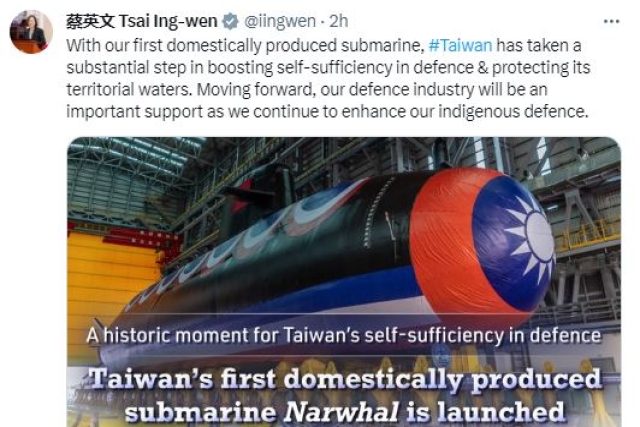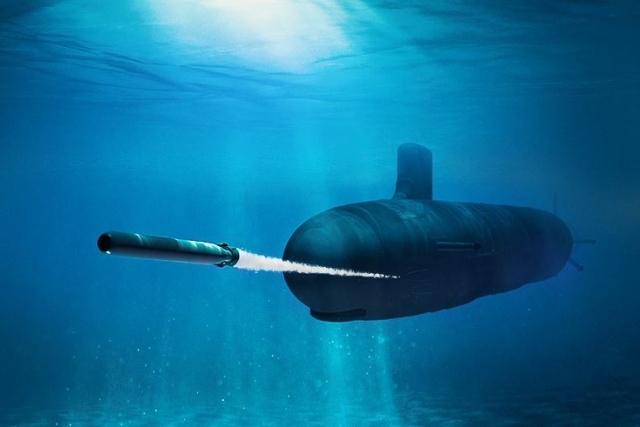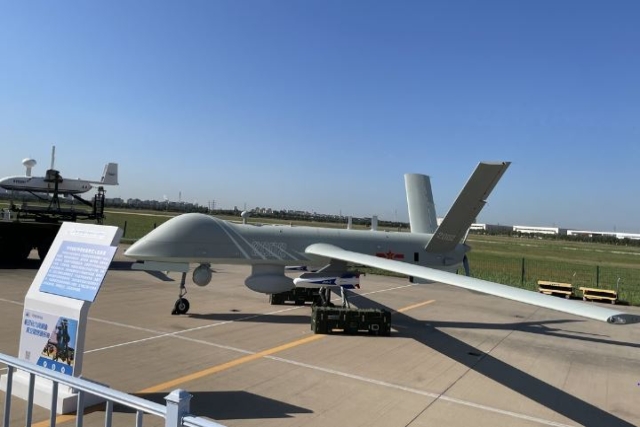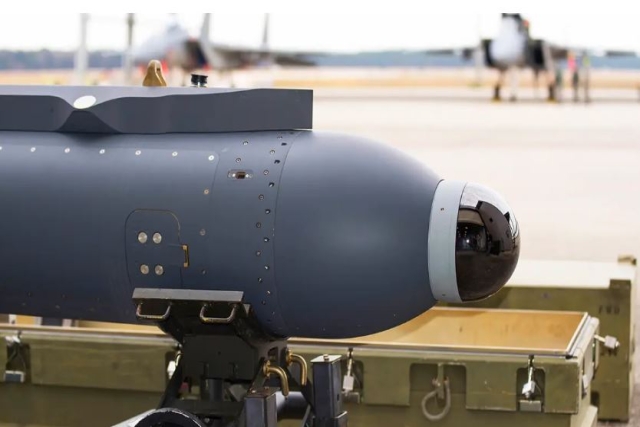Taiwan Unveils First Ever Domestically-built Submarine 'Narwhal'

Taiwan's President, Tsai Ing-wen, unveiled the nation's first domestically built submarine, "Narwhal" (or "Hai Kun" in Mandarin), in a ceremony in Kaohsiung.
This marked a significant achievement under Tsai's defense policy initiated in 2016, emphasizing the development of eight new submarines.
"In the past, the idea of creating a domestically designed and manufactured submarine seemed insurmountable. However, today, we witness a submarine crafted by our nation's people," Tsai remarked, highlighting its vital role in enhancing the navy's capabilities for "asymmetric warfare."
The diesel-electric submarine, with a $1.54 billion budget, will undergo tests and be delivered to the navy by the end of 2024, featuring a Lockheed Martin combat system and U.S.-made Mark 48 torpedoes.
Some journalists toured the submarine's shipyard but couldn't take close-up photos for security reasons, and specific details about its size and capabilities remained undisclosed.
Taiwan aims to deploy two domestically produced submarines by 2027, potentially equipped with missiles, and ultimately operate a fleet of ten submarines. In contrast, China possesses over 60 submarines, including nuclear-powered ones, raising concerns.
Although the Taiwan Strait's depth limits submarine operations, the new vessels could play a vital role in countering Chinese warships in the Bashi channel, dividing Taiwan and the Philippines, and the waters around Taiwan's westernmost islands. China's naval forces must navigate these strategic points within the first island chain, including Japan, Taiwan, and the Philippines, to reach the broader Pacific Ocean.
Beijing has warned against Taiwan's independence and increased military exercises in the Taiwan Strait. China's Defense Ministry, when asked about the new submarine, likened it to "a mantis trying to stop a chariot," using a common idiom.













